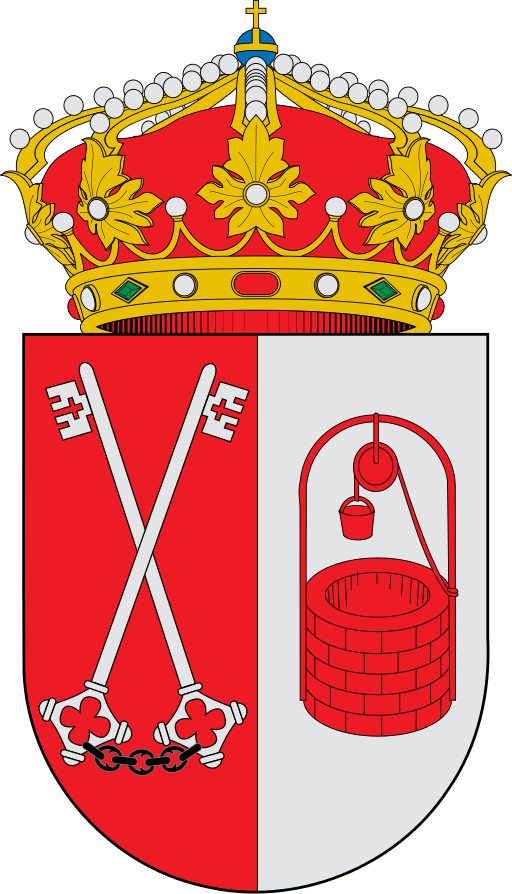Alcadozo

The Village
Alcadozo is located in the southwest of the province of Albacete, 44 km from the capital, at the foot of the Sierra de Alcaraz, in the foothills of the Sierra del Sahúco. It covers an area of 98.28 km2 and is located at an altitude of 924 m. It is surrounded by the municipalities of Peñas de San Pedro, Ayna and Pozohondo and has around 800 inhabitants.
To the west are the hamlets of Casasola, El Molinar, La Molata, Fuente del Pino, Santa Ana, La Jara and La Herrería to the southwest. All of them are surrounded by landscapes with beautiful holm oaks, places where hare, rabbit and partridge provide plenty to prepare the exquisite gazpachos manchegos, typical of the area.
Vines and grapevines cover facades and courtyards, overhanging the wall and overlooking the street, with the double utility of providing shade and a highly appreciated grape, as much as the famous sweet that is made here and which is a gift for the palate: the sighs of the wind.
Qué visitar
Alcadozo stands out for its natural heritage, with unique trees such as the immense "Carrasca de la Vaca", which is over a thousand years old, and the majestic "Pino del Guapero", which is over five hundred years old. If you love hiking, it is essential to do the Embrace the Trees Route, where you can visit several of these unique trees.
It is also worth mentioning the fountains and springs that rise in the area, as well as its caves, as it is particularly striking that there are more than ten caves in a range of less than four kilometres from Alcadozo (many of which are catalogued as archaeological sites).
Festivities
Alcadozo is a town that celebrates San Isidro in procession, and in which there is a certain fondness for bright and contrasting colours in many of its corners, as is the case in the bullring. During the Fiestas of San Isidro, on the 15th of May, the running of the bulls is traditional, one of the oldest in the province and one that attracts the largest number of runners, as the bulls are driven from the fields towards the town. The encierros are organised thanks to the collaboration of the local residents.
- 3rd February: A picnic in the countryside. The typical place is Las Terreras.
- 1st May: Festival in honour of the co-patron saint San Ricardo Pampuri.
- 15 and 16 May: Festivities in honour of the patron saint San Isidro Labrador.
- 8th December: Festivities in honour of the patron saint, the Purísima Concepción.
Carrasca de la Vaca
Immense thousand-year-old holm oak. It is about 15 m high and has a crown diameter of 30 m (like the bullring of Alcadozo ). The name Carrasca de la Vaca comes from the fact that it was used to hang and skin a cow that died during one of its transfers. Another curiosity that the locals tell us is that years ago the top was cut to make a huge coal bunker and that is why it has helped it to grow in width.
This holm oak is one of the few trees that has the peculiarity of having its own musical theme. The Valencian composer Efrén López came across this unique tree by chance. It represents the exact midway point between the birthplace of his mother and his father, in a village in Valencia and Jaén respectively. He was struck by the particularity of the holm oak and composed his own song for it in 2013: Bourrées de la Carrasca de la Vaca, which can be found on YouTube.
Image Gallery
Location
Plan your Trip
-
Get to Know the Region
Button
Our Villages
Partners

Título de diapositiva
Escriba el subtítulo aquíBotón
Título de diapositiva
Escriba el subtítulo aquíBotón
Título de diapositiva
Escriba el subtítulo aquíBotón
Título de diapositiva
Escriba el subtítulo aquíBotón
Título de diapositiva
Escriba el subtítulo aquíBotón
Título de diapositiva
Escriba el subtítulo aquíBotón
Título de diapositiva
Escriba el subtítulo aquíBotón
Título de diapositiva
Escriba el subtítulo aquíBotón
Título de diapositiva
Escriba el subtítulo aquíBotón
Título de diapositiva
Escriba el subtítulo aquíBotón
Título de diapositiva
Escriba el subtítulo aquíBotón
Título de diapositiva
Escriba el subtítulo aquíBotón
Título de diapositiva
Escriba el subtítulo aquíBotón
Título de diapositiva
Escriba el subtítulo aquíBotón
Título de diapositiva
Escriba el subtítulo aquíBotón
Título de diapositiva
Escriba el subtítulo aquíBotón
Título de diapositiva
Escriba el subtítulo aquíBotón
Título de diapositiva
Escriba el subtítulo aquíBotón
Título de diapositiva
Escriba el subtítulo aquíBotón
Título de diapositiva
Escriba el subtítulo aquíBotón
Título de diapositiva
Escriba el subtítulo aquíBotón-

Título de diapositiva
Escriba el subtítulo aquíBotón
© 2022 Derechos de Uso Reservado
(+34) 624 23 56 90
info@4cuencas.com
Partners

Título de diapositiva
Escriba el subtítulo aquíBotón
Título de diapositiva
Escriba el subtítulo aquíBotón
Título de diapositiva
Escriba el subtítulo aquíBotón
Título de diapositiva
Escriba el subtítulo aquíBotón
Título de diapositiva
Escriba el subtítulo aquíBotón
Título de diapositiva
Escriba el subtítulo aquíBotón
Título de diapositiva
Escriba el subtítulo aquíBotón
Título de diapositiva
Escriba el subtítulo aquíBotón
Título de diapositiva
Escriba el subtítulo aquíBotón
Título de diapositiva
Escriba el subtítulo aquíBotón
Título de diapositiva
Escriba el subtítulo aquíBotón
Título de diapositiva
Escriba el subtítulo aquíBotón
Título de diapositiva
Escriba el subtítulo aquíBotón
Título de diapositiva
Escriba el subtítulo aquíBotón
Título de diapositiva
Escriba el subtítulo aquíBotón
Título de diapositiva
Escriba el subtítulo aquíBotón
Título de diapositiva
Escriba el subtítulo aquíBotón
Título de diapositiva
Escriba el subtítulo aquíBotón
Título de diapositiva
Escriba el subtítulo aquíBotón
Título de diapositiva
Escriba el subtítulo aquíBotón
Título de diapositiva
Escriba el subtítulo aquíBotón-

Título de diapositiva
Escriba el subtítulo aquíBotón



















